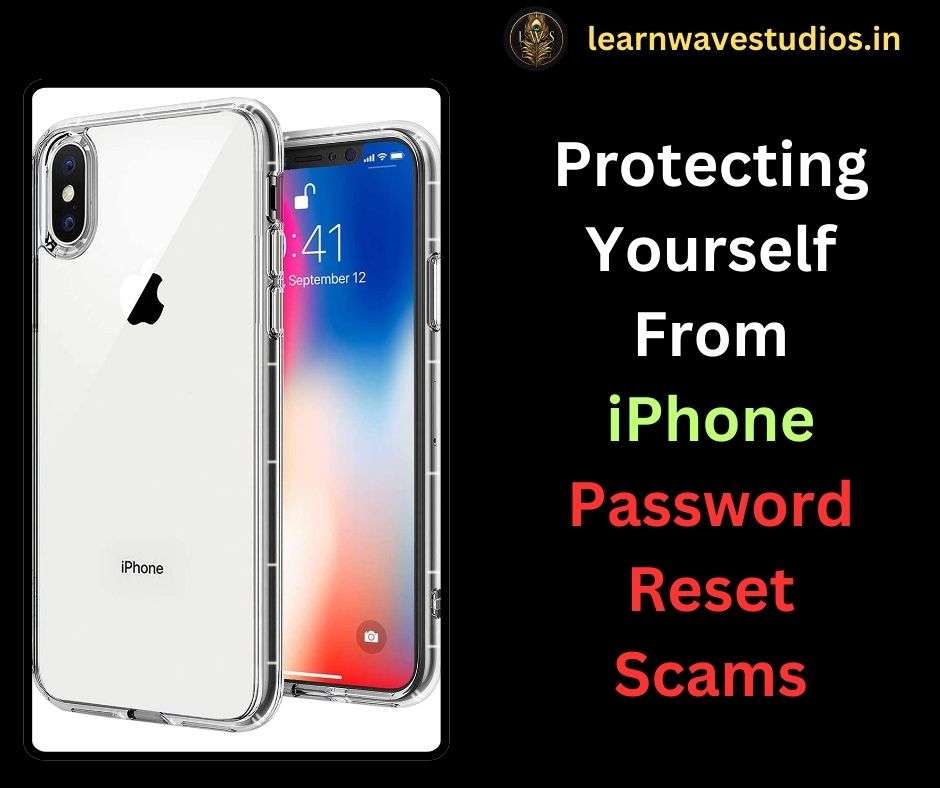In today’s digital age, scammers are becoming increasingly crafty, targeting unsuspecting Apple users with sophisticated phishing tactics. It’s essential to stay informed and vigilant to safeguard against such scams. This guide provides comprehensive insights and practical tips to protect yourself from iPhone password reset scams, ensuring peace of mind and security for all Apple device users.

Understanding the Threat | iPhone Password Reset Scams
The threat of iPhone password reset scams looms large, with scammers employing deceptive tactics to lure victims into compromising their Apple accounts. By sending out fraudulent emails and messages that mimic official Apple communications, scammers create a sense of urgency and panic, compelling unsuspecting users to disclose their login credentials. Subsequently, victims often receive a barrage of misleading notifications on their devices, further escalating the scam’s impact.
Phishing Attack Tactics | iPhone Password Reset Scams
The scammers’ modus operandi involves a multi-faceted approach, including the following deceptive tactics:
- Fake Password Reset Notifications
- Scammers deploy fake password reset notifications to prompt users into divulging sensitive account information.
- Persistent Fake Notifications
- Victims are bombarded with incessant notifications, disrupting their device usage and intensifying the scam’s impact.
- Spoofed Calls from Supposed Apple Support
- Scammers resort to impersonating Apple support representatives, adding an element of authenticity to their fraudulent scheme.
Real-life Experiences | iPhone Password Reset Scams
The severity and sophistication of these phishing attacks are exemplified by real-life experiences, such as that of Parth Patel, an entrepreneur in the conversational AI space. Patel’s accounts of being bombarded with password reset prompts and receiving deceptive calls underscore the alarming nature of these scams. These experiences serve as timely reminders for users to remain cautious and vigilant against such threats.
Protecting Yourself: Practical Steps
1. Verify the Authenticity
It is crucial to exercise caution when receiving emails or messages claiming to be from Apple. Always scrutinize the sender’s email address and the URLs provided in the message. When in doubt, verify the communication’s authenticity by contacting Apple directly through their official website or customer support hotline .
2. Stay Informed
Remaining informed about the prevalent phishing tactics and the latest scamming trends is pivotal to staying one step ahead of potential threats. Regularly updating knowledge about such scams ensures a proactive stance against falling victim to these deceitful tactics.
3. Educate Your Peers
Spread awareness about the modus operandi of these scammers and educate your peers to recognize and counter such fraudulent attempts. By creating a network of informed users, the community becomes more resilient to online scams, bolstering digital security for all.
In conclusion, safeguarding oneself against iPhone password reset scams demands a proactive and informed approach. By staying attuned to the prevalent tactics and exercising caution in responding to unsolicited communications, users can shield themselves from falling prey to these deceitful ploys. Remember, a vigilant and educated community is the strongest deterrent against such online threats.
The information provided in this guide equips you with the knowledge and practical steps necessary to navigate the digital landscape securely. Remaining informed and sharing insights within your community ensures a safer and securer online environment for all Apple device users.
Together, let’s stay vigilant and maintain our digital security in the face of evolving online threats!

